Sig Sauer Ammo Review Summary Video
You may have missed it since Sig hasn’t made any real announcement yet, but Sig Sauer is now officially in the business of making ammunition. They’re expected to launch some official publicity in the coming weeks around the time of the NRA Annual Meetings.
The new Sig Sauer Elite Performance self-defense ammo comes in five different handgun calibers: .380 ACP, 9mm, .40 S&W, .357 Sig, and .45ACP. Each caliber features a single load and bullet weight using Sig’s proprietary “V-Crown” bullet, all with standard pressure (no +P loads). The ammo is loaded in a Sig-owned facility in Eubank, Kentucky.
We got in some of the first batch of Sig Sauer ammo last week, and the .45 ACP and .357 Sig have already sold out. But before we posted it for sale, I grabbed a few boxes to do some testing for those of you who might be curious about what this ammo can do. If you want the short version, just watch the video summary above. The rest of you number loving ballistics nerds can read on for all that spreadsheet goodness I know you crave.
Testing Goals
I tried to keep this pretty simple at straightforward, so no 2000-round reliability tests this time. I basically wanted to know three things about the Sig ammo:
- Does it function/cycle normally?
- Is it reasonably accurate?
- How does it perform compared to other available self-defense loads?
To answer these questions, I fired groups for accuracy, measured velocity on a chronograph, and observed the performance of each load in ballistics gelatin. In the interest of time, I skipped over the .357 Sig load since it’s the least popular of the five calibers. If there are enough requests from you guys, I’ll re-visit that load in a future post.
The test guns used were as follows:
- .380 ACP: CZ-83
- 9mm: Glock 22 w/ Lone Wolf 9mm conversion barrel
- .40 S&W: Sig P226
- .45 ACP: Springfield Armory XDm-45 4.5″
For comparison in the ballistics gel, I also tested loads from a second brand of ammo for each caliber. I used the popular Federal HST self-defense ammo as the counterpart for the 9mm, .40 S&W, and .45 ACP loads.
For .380 ACP, I used Remington Golden Saber as the comparison load.
Accuracy and Reliability
Like I said, I didn’t run a real high round-count for this Sig Sauer ammo test, so the “reliability test” was limited to 20 rounds for each caliber. That’s not much of a true reliability test, but in reality, the dependability of any given load will vary from one gun to the next. Before carrying any load for self-defense, it’s often recommended that you run at least 200 rounds of that load through your firearm to ensure that the load and gun play nice together. I think that’s a pretty good guideline, but from this test, there are a few additional observations that might be helpful:
- None of the test guns exhibited any feeding problems or malfunctions with the Sig V-Crown ammo.
- Ejection patterns for the spent brass casings were consistent with other loads fired from the test guns
- Bullet velocities were normal for each load (details below)
- The Sig V-Crown bullet has a wide opening relative to many other modern hollow-point loads. It somewhat resembles the Federal Hydra-Shok self-defense ammo. Some pistols may have trouble feeding this kind of ammo. If your gun has had reliability problems with Hydra-Shoks in the past, I wouldn’t be surprised if the Sig ammo exhibits similar issues.
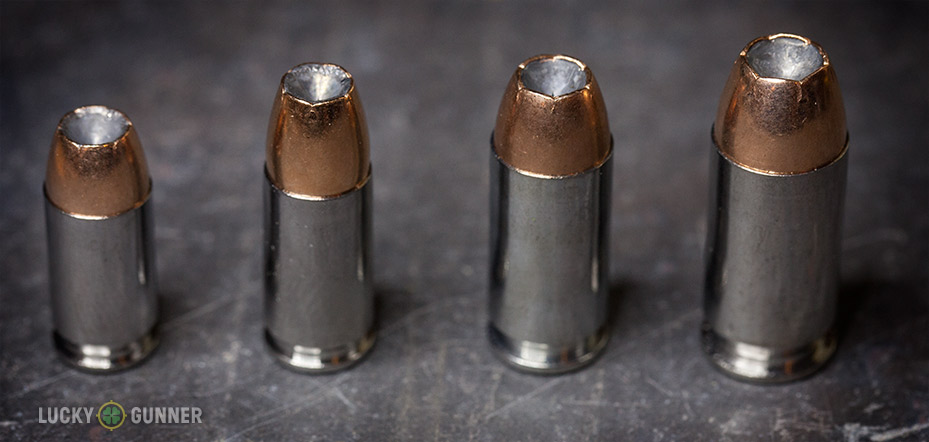
For accuracy, I fired one 10-shot group for each load from a bench rest at 15 yards. Those results are on the table below. These numbers are all fairly consistent with the kind of accuracy I’ve come to expect from each of these pistols. The Glock 22 with the Lone Wolf 9mm conversion barrel has never been a particularly accurate setup for me, so better groups should be achievable with a more accurate gun. Unfortunately, the only other pistol I had available at the range that day was a S&W M&P9, which would have most likely grouped even worse.
This test was intended to be a quick overview to spot any glaringly obvious flaws or problems with the ammo. For self-defense purposes, the Sig Sauer V-Crown seems to perform just fine in the accuracy department.
| Load | Test Pistol | Barrel Length | Group Size |
| Sig Sauer .380 ACP | CZ-83 | 3.82″ | 2.4″ |
| Sig Sauer 9mm | Glock 22 w/LW 9mm BBL | 5.03″ | 3.1″ |
| Sig Sauer .40S&W | Sig P226 | 4.4″ | 2.2″ |
| Sig Sauer .45 ACP | SA XDm-45 4.5″ | 4.5″ | 1.6″ |
Ballistics Gelatin
For the ballistics test, I used blocks of gel from Clear Ballistics. Their synthetic gel substitute is made to simulate the properties of the traditional organic-based ordnance gelatin the FBI uses for testing ammunition. If you’re not familiar with the FBI testing protocols, there is a lot of great information available on the subject, but in the most basic terms, the gel testing is used to determine whether the bullets will penetrate and expand when used to defend against an attacker in a life-threatening assault.
Before we dive too far into the minutiae, let’s just remember that handguns are notoriously terrible at stopping bad guys. I’ll link to this article by Greg Ellifritz one more time because it explains the topic better than I ever could. If this topic interests you enough to have read this far, I encourage you to read Greg’s article in its entirety (you’ll totally miss the point if you just skim it). We carry handguns because they’re convenient, not because they’re the best defensive tool we have.
Now with that out of the way, if you are forced to rely on a handgun to save your life, you want to get every possible advantage you can get. That’s why we like to see how our handgun ammo performs in ballistics gel. The FBI has established 12-18 inches of penetration into ballistics gel as the ideal standard for law enforcement duty ammunition.That’s not just an arbitrary number; handguns are effective at stopping bad guys only if their bullets strike and disrupt vital organs that essentially “shut down” his system so he can’t hurt you anymore. To do this, the bullet has to burrow through a lot of soft tissue (as well as bones and clothing and whatever else may be in the way), and that’s where the 12″ minimum comes from. More than 18″ of penetration, and there’s a risk of over-penetration. That happens when the bullet passes all the way through the bad guy and still has enough energy left to harm innocent by-standers.
The gelatin used in these tests is not a perfect analog for human tissue, but it’s about as close as we can get practically and still achieve repeatable results. Testing bullets in other mediums like food-grade gelatin, water jugs, wet newspaper, or hunks of meat might be better than nothing, but the results are difficult to interpret in any useful way. Ballistics gelatin has been used as the industry standard for many years, and there’s a large body of existing data to use for comparison.
For a more comprehensive test, ballistics gel is often used along with different barriers to determine how the bullets behave when they encounter fabric, plywood, and glass before striking the target. My tests were only performed on bare gelatin with no barriers. Penetration and expansion of each load may look significantly different in a test with a few layers of denim placed in front of the gel.
Ballistics Testing Procedure
In testing the Sig Sauer Elite Performance ammo, I fired five rounds of each caliber in to a 16″ long block of Clear Ballistics gelatin at a distance of 10 feet. A fresh block was used for each load. I did the same for the four comparison loads. The .380 ACP and 9mm loads were tested with the gel blocks as they came shipped directly from Clear Ballistics. I melted and re-molded these blocks after the first round of tests according to the instructions from Clear Ballistics. The .40 S&W and .45 ACP ammo was then fired into these re-molded blocks. In the photos, you can see that the blocks from the second batch aren’t as clear as the first batch. That’s because I wrapped the blocks in paper for transporting them to the range, which gave the blocks a cloudy appearance when the paper was removed. The consistency of the gel was not affected.
After firing into the gel, I measured the penetration depth of each round, and then retrieved the fired bullets from the gelatin. The expanded bullet diameters listed below are an average of each of the five bullets from each load. Measuring the penetration depth can be a little tricky sometimes. The gel causes some optical distortion, much like looking through aquarium glass. I measured the penetration depth from multiple sides of the block to minimize this effect. I measured each along the trajectory of the wound channel since not every round hit the gel at an angle perfectly parallel to the orientation of the block. Because of this and the visual distortion of the block, it is not possible to get a 100% accurate reading of the penetration depth just from looking at the two-dimensional photos below.
In the photos below, you can also see where the bullets traveled a bit further than their final resting spot, but “bounced back” in the gel before coming to a complete stop. The additional travel looks to be anywhere from one half to a full inch in the gel for each bullet. I could not find any reliable information regarding whether this portion of the channel should be included in the penetration depth measurement, so I have left it out. My measurements start at the entry point on the block, and end at the far end of the bullet’s resting point.
Gathering the bullet velocity data was pretty straightforward. I shot each load through a Chrony Beta Master chronograph to measure bullet velocity. Distance from muzzle to chrono was 10 feet, except for the .45 ACP which had to be moved back to 15 feet to get an accurate reading. The below data shows the average velocity from 10 rounds of each load. I also added the manufacturer’s published velocity for both the Sig ammunition loads and the comparison loads. Sig’s velocity data is very comparable to what I measured, and any discrepancies can be attributed to differences in barrel length (Sig lists test barrel length at 4 inches for .380 ACP, 9mm, and .40S&W and 5 inches for .45 ACP)
Results
| Barrel Length | Measured Velocity (fps) | Manufacturer Velocity (fps) | Penetration Depth | Expanded Diameter | |
| Sig Sauer .380 ACP 90 gr | 3.82″ | 977.2 | 980 | 8.94″ | 0.56″ |
| Rem Golden Saber .380 ACP 90 gr | 3.82″ | N/A | 940 | 10.08″ | 0.59″ |
| Sig Sauer 9mm 124 gr | 5.03″ | 1197.6 | 1189 | 9.16″ | 0.72″ |
| Federal HST 9mm 124 gr | 5.03″ | N/A | 1120 | 13.1″ | 0.68″ |
| Sig Sauer .40S&W 165 gr | 4.4″ | 1065.7 | 1090 | 12.8″ | 0.73″ |
| Federal HST 40S&W 165 gr | 4.4″ | N/A | 1130 | 16.72″ | 0.70″ |
| Sig Sauer .45 ACP 200 gr | 4.5″ | 917.11 | 915 | 13.58″ | 0.73″ |
| Federal HST 45ACP 230 gr | 4.5″ | N/A | 890 | 14.18″ | 0.87″ |
Conclusion
I’ll refrain from giving any hard recommendations based on this data. This is my first substantial and relatively in-depth attempt at ballistics testing, and there are a few things I will do differently next time. That said, I think the data I gathered for the Sig ammo is pretty solid, especially when compared solely to the competing loads of each caliber.
As you can see, the .45 ACP Sig Elite Performance performed closest to its comparison load out of all the Sig ammo tested. Expansion of the .45 ACP Sig load was not as good as the impressive spread of the HST, but the average penetration depth was very close. The .40 S&W load for the Sig ammo did break the magical 12-inch barrier, but was still significantly out-performed by the HST in terms of penetration. Expansion of the two was nearly identical.
The 9mm performance was not especially impressive. Sig Sauer’s 124 grain bullet only penetrated to an average of 9 inches compared to the HST’s 13 inches. Expansion was slightly greater than the HST but without more penetration, that doesn’t help a whole lot. The .380 performance was sub-par for both the Sig load and the comparison Remington Golden Saber. Very few loads in this caliber exhibit sufficient penetration and expansion, so these results aren’t especially surprising.
Personally, I’m a big fan of 9mm in general, but based on what I’ve read in the past, I prefer the performance of 124 grain +P and 147 grain loads. So unless Sig comes out with something new in the future, I’m not changing the load that I carry any time soon. But again, I’m no ballistics expert, so I’ll leave it to you to examine the information I gathered and decide for yourself whether the new Sig Sauer Ammo is something you might want to try out.
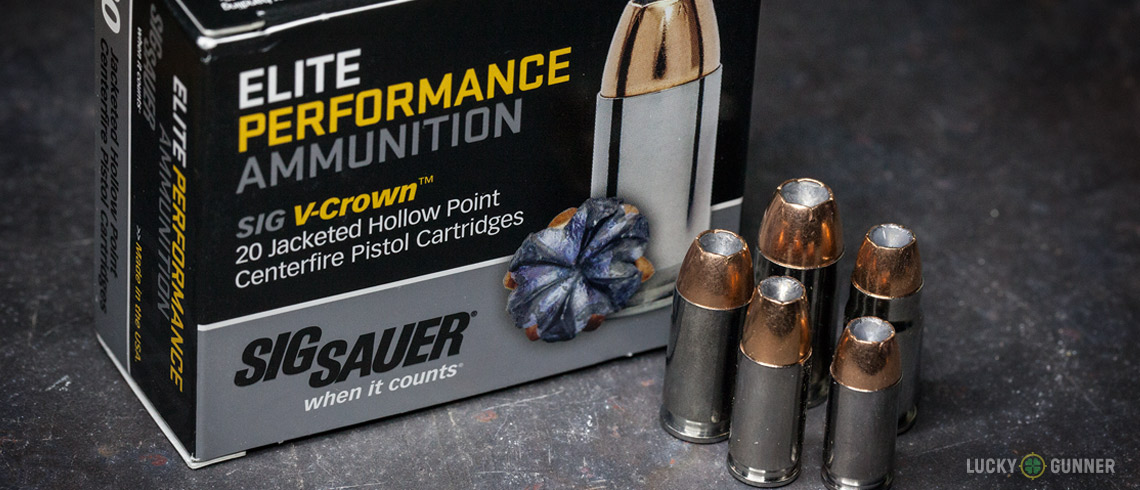

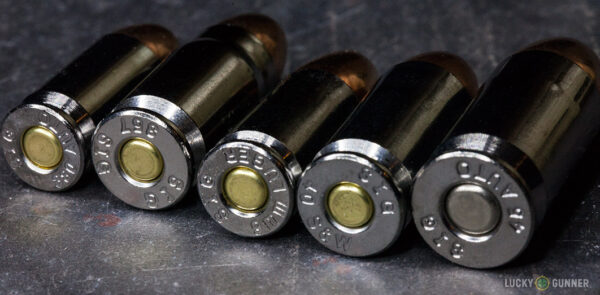
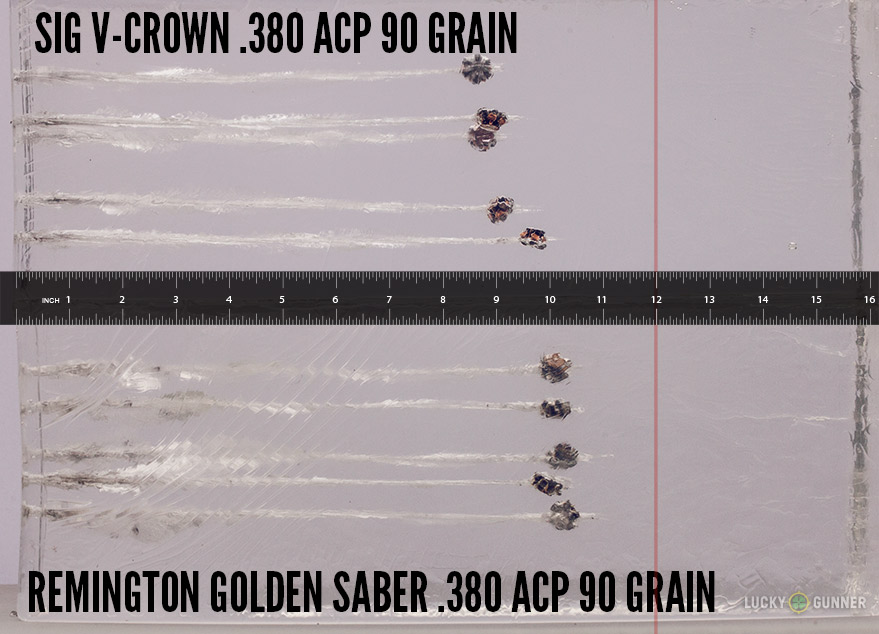
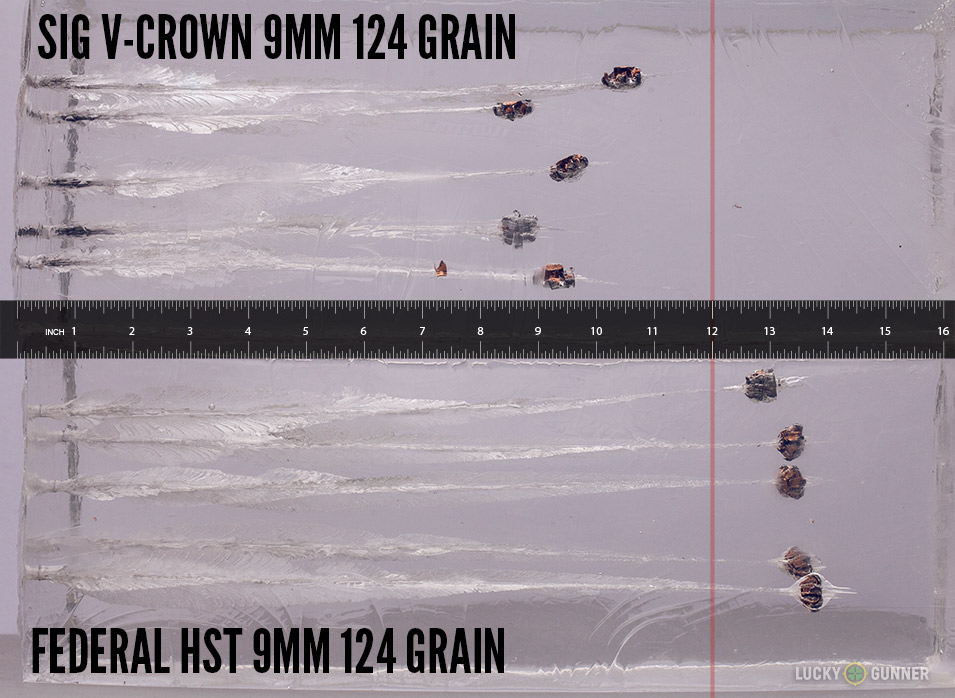
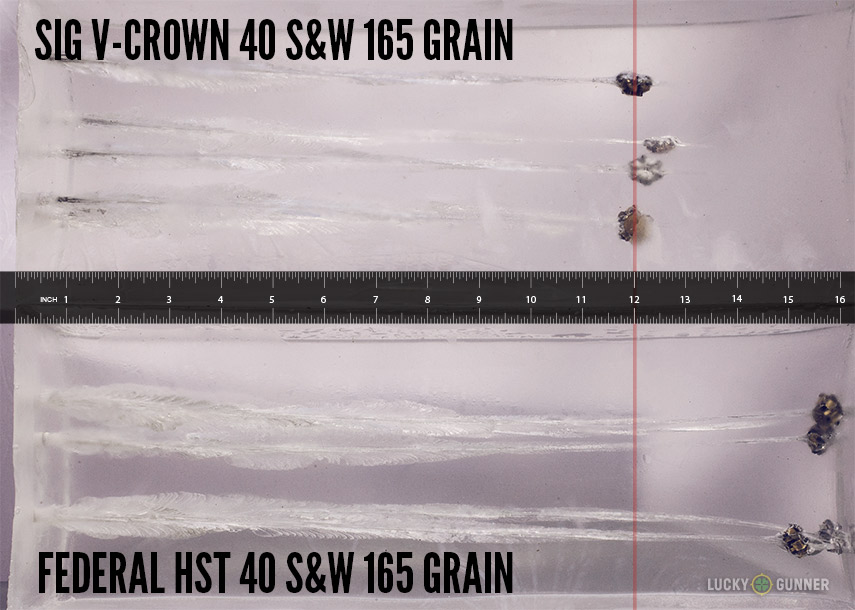
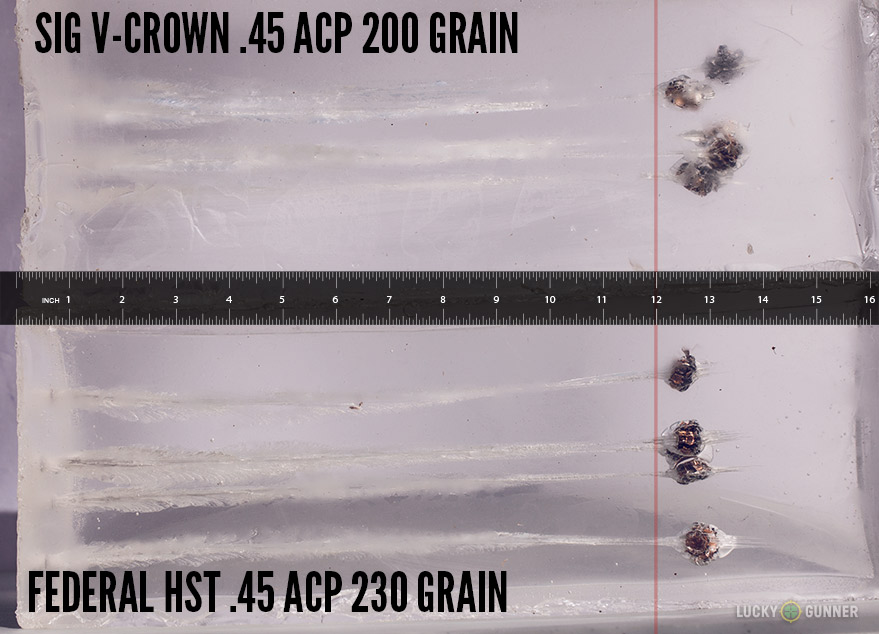
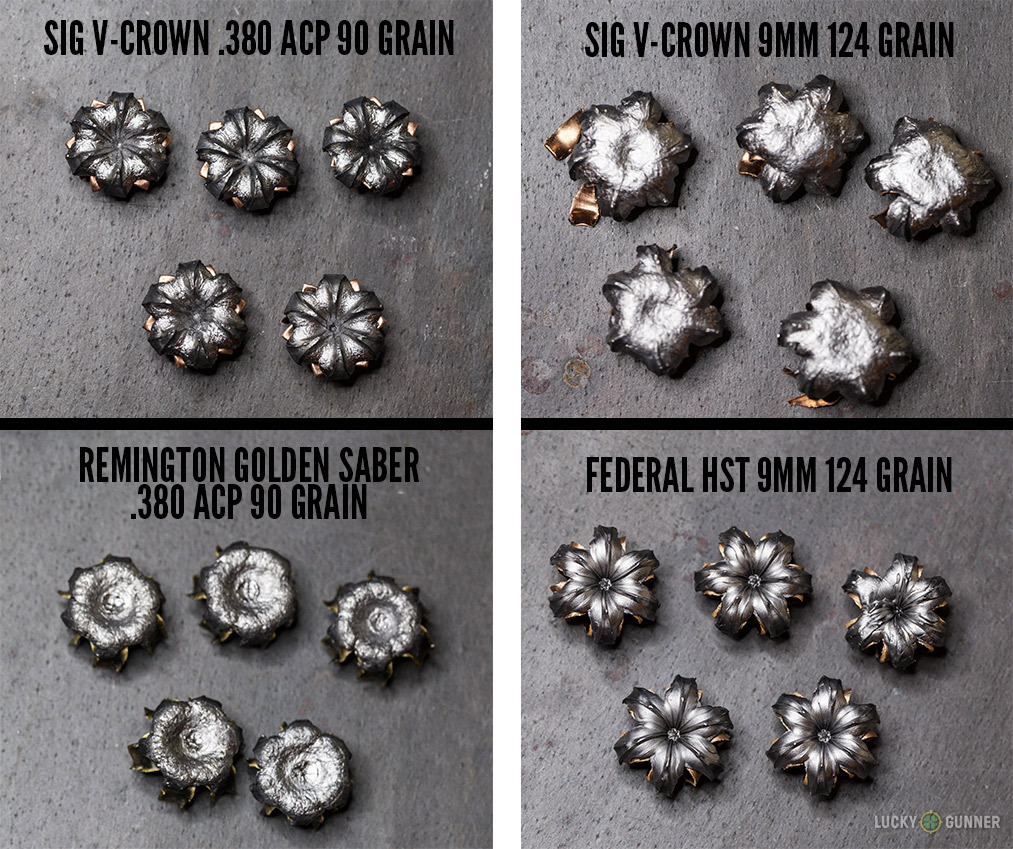
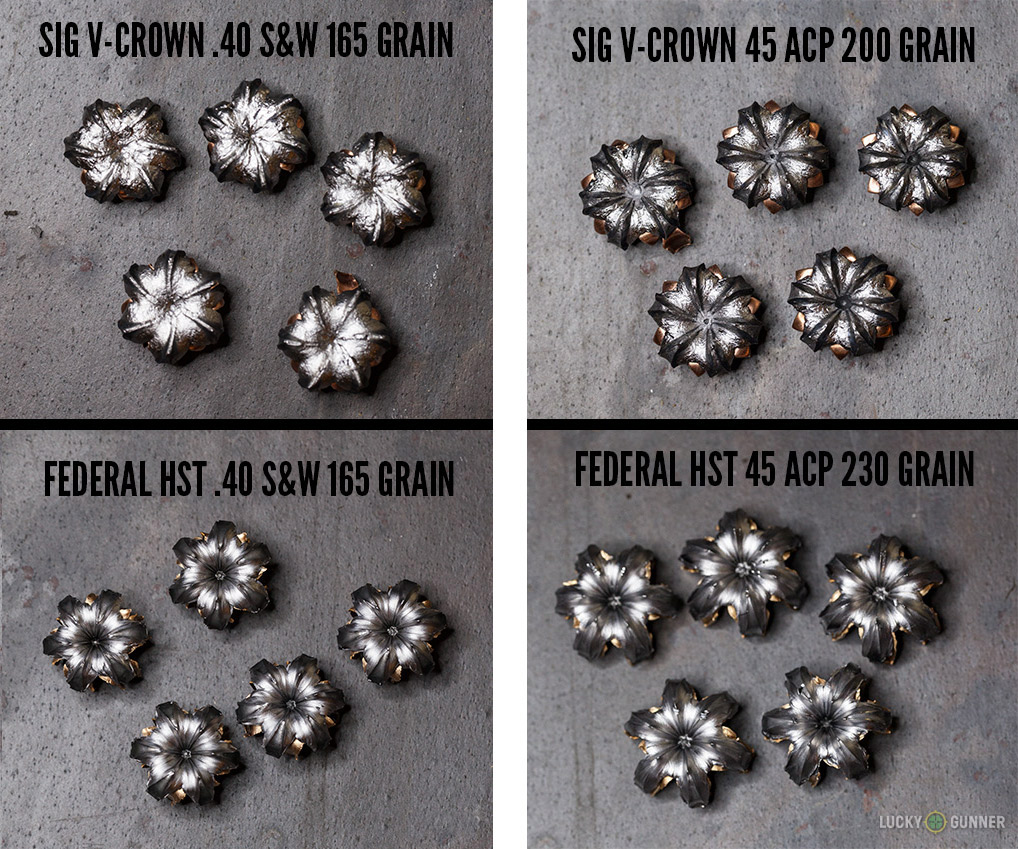
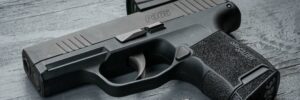
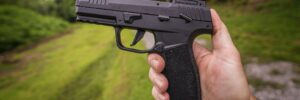
like to have seen the 357sig ammo!
Send me the 357 Sig rounds and ill test them for you. That's my duty round.
I will happy to test 380 and 9mm
i want some
Looks good
So Sig is making ammo… but they are not making it in .357Sig? WTF?
like to have seen the 357sig ammo!
Send me the 357 Sig rounds and ill test them for you. That’s my duty round.
We’re getting a good number of requests, Bill. I’ll see if I can fit it into the schedule the next time I’m filming at the range.
You might want to read that again, sir:
"In the interest of time, I skipped over the .357 Sig load since it’s the least popular of the five calibers. If there are enough requests from you guys, I’ll re-visit that load in a future post."
I will happy to test 380 and 9mm
Thanks Arthur, but we already got those two covered.
i want some
They are making it but the author skipped it because it's the least popular from the 5. He also wrote that the first batch sold out along with the 45ACP
Looks good
So Sig is making ammo… but they are not making it in .357Sig? WTF?
You might want to read that again, sir:
“In the interest of time, I skipped over the .357 Sig load since it’s the least popular of the five calibers. If there are enough requests from you guys, I’ll re-visit that load in a future post.”
They are making it but the author skipped it because it’s the least popular from the 5. He also wrote that the first batch sold out along with the 45ACP
Andres Hernandez We also didn’t order as much of the .357 Sig compared to the other calibers. Traditionally, our sales for that caliber are way too low to justify carrying a large stock.
Help me understand why a manufacturer wouldn't keep re-engineering and tweaking until they met FBI standards? There are a lot of 380 HP rounds, yet all but a few pass the tests. I'm using Precision One XTP in a Sig P238 now. It passes in bare gelatin and denim covered gelatin. So do Fiocchi Extrema and Hornady Custom XTP.
looks to me like they have a great bullet design, at least for non barrier situations, they just need to adjust the powder charge. this might be as simple as them collecting data from outside sources and adjusting powder charges
Two main reasons: R&D is really expensive for this kind of thing, and most consumers don't know/care about the FBI protocols. Only when the ammo is going to be marketed to law enforcement or government agencies do companies tend to put any real effort into meeting the FBI criteria (Federal HST, Speer Gold Dot, Winchester Ranger-T, etc)
It might not be that simple, but I would be really interested in seeing what the 124 grain bullet would do if they offered a +P load.
We're getting a good number of requests, Bill. I'll see if I can fit it into the schedule the next time I'm filming at the range.
Andres Hernandez We also didn't order as much of the .357 Sig compared to the other calibers. Traditionally, our sales for that caliber are way too low to justify carrying a large stock.
Thanks Arthur, but we already got those two covered.
looks to me like they have a great bullet design, at least for non barrier situations, they just need to adjust the powder charge. this might be as simple as them collecting data from outside sources and adjusting powder charges
It might not be that simple, but I would be really interested in seeing what the 124 grain bullet would do if they offered a +P load.
I think “we” get substandard as opposed to law enforcement issue? Even with the P+ brands and fancy expansion. I think your best to reload your own and see what works best for you.
Don Reitmeyer III if you end up in a situation where you need to fire your weapon, home loaded ammo is not a good thing to have in court. especially when so many brands will do just fine
I think the slower a bullet enters the target the more damage it does on entry, the .22 is an example since a CB load would bounce around in a skull, as does the 5.56 M -16 and AR loads. In the USMC I've heard them, at long distance) tumble and smack a target leaving an oblong hole. They hit a bone and change direction doing nasty work. And frankly, either one of the loads shown will ruin someone's day. I love the innovation, but it's a shame they denied us the black Head ammo, labeled a "cop killer"? People want the same protection the police do when their ass is in trouble and 911 ain't an option! Semper Fi.!
They all do the job, the "law enforcement type . in fact a few knife cuts into the top makes the round end up in even sharper edges. It's a Marine trick, I'm sure long used by others. I agree with you, plus you can reload your own since the bullets are available to tweek a load to suit you.
I think "we" get substandard as opposed to law enforcement issue? Even with the P+ brands and fancy expansion. I think your best to reload your own and see what works best for you.
Don Reitmeyer III if you end up in a situation where you need to fire your weapon, home loaded ammo is not a good thing to have in court. especially when so many brands will do just fine
I think the slower a bullet enters the target the more damage it does on entry, the .22 is an example since a CB load would bounce around in a skull, as does the 5.56 M -16 and AR loads. In the USMC I’ve heard them, at long distance) tumble and smack a target leaving an oblong hole. They hit a bone and change direction doing nasty work. And frankly, either one of the loads shown will ruin someone’s day. I love the innovation, but it’s a shame they denied us the black Head ammo, labeled a “cop killer”? People want the same protection the police do when their ass is in trouble and 911 ain’t an option! Semper Fi.!
I wish it was made in Exeter NH cause then Id be right down the street from em
I wish it was made in Exeter NH cause then Id be right down the street from em
The stuff is made by Sig so you can be sure they tested the crap out of it before releasing it for sale – I have a couple in 357 Sig so I'm sorry you didn't test that one – anyway, the expansion of both Federal and Sig closely resembles the Black Talon and although the Sig stuff comes up a little short in penetration I'm pretty sure it is adequate to get the job done – I use mostly Federal LE loads so I probably won't switch right away but if things aren't up to par with the Sig performance you can be sure they will tweak the loads to meet FBI standards – they sell most of their line to Law enforcement and military and their schools will certainly discuss the merits of their ammo thoroughly as will all the gun mags
The stuff is made by Sig so you can be sure they tested the crap out of it before releasing it for sale – I have a couple in 357 Sig so I’m sorry you didn’t test that one – anyway, the expansion of both Federal and Sig closely resembles the Black Talon and although the Sig stuff comes up a little short in penetration I’m pretty sure it is adequate to get the job done – I use mostly Federal LE loads so I probably won’t switch right away but if things aren’t up to par with the Sig performance you can be sure they will tweak the loads to meet FBI standards – they sell most of their line to Law enforcement and military and their schools will certainly discuss the merits of their ammo thoroughly as will all the gun mags
Seems like the 9mm and especially the 380 expand VERY well due to their V-crown design. Problem is: they expand TOO well and do not penetrate deeply enough, especially the 9mm. Question is: How well would all rounds tested perform with 4 layers of denim in front of the block…could the holllow-point cavities be stuffed up with clothing and be prevented from expanding well?
Seems like the 9mm and especially the 380 expand VERY well due to their V-crown design. Problem is: they expand TOO well and do not penetrate deeply enough, especially the 9mm. Question is: How well would all rounds tested perform with 4 layers of denim in front of the block…could the holllow-point cavities be stuffed up with clothing and be prevented from expanding well?
It is slightly disappointing that the 9mm load of the Sig V-Crown didn't penetrate to the FBI minimum. Looking at the permanent wound channel of the gel, the round seems to expand sooner. This would seem to be consistent with their claims that it is a hollower hollow point and is meant to expand even at slower velocities. This could be the cause of a reduced amount of penetration. The quicker expansion is likely to slow the bullet down faster keeping it's penetration to a minimum.
It is slightly disappointing that the 9mm load of the Sig V-Crown didn’t penetrate to the FBI minimum. Looking at the permanent wound channel of the gel, the round seems to expand sooner. This would seem to be consistent with their claims that it is a hollower hollow point and is meant to expand even at slower velocities. This could be the cause of a reduced amount of penetration. The quicker expansion is likely to slow the bullet down faster keeping it’s penetration to a minimum.
New tests with denim in front did perfect, you guys are shooting into bare gel, test it the proper way and it will do great! The tests I saw needed the cloth to keep it from over expanding/ under penetrate
I do like the testing, but it was tested and designed around clothing.
New tests with denim in front did perfect, you guys are shooting into bare gel, test it the proper way and it will do great! The tests I saw needed the cloth to keep it from over expanding/ under penetrate
I do like the testing, but it was tested and designed around clothing.
Nice review! The Sig Ammo is cheaper than the HST, thought I would throw that out there.
Nice review! The Sig Ammo is cheaper than the HST, thought I would throw that out there.
Yeah I would've like to see the .357 sig as well since its what I carry. I saw it on the shelf the other day and almost picked it up but figured I'd let the internet show me how it is first.
Yeah I would’ve like to see the .357 sig as well since its what I carry. I saw it on the shelf the other day and almost picked it up but figured I’d let the internet show me how it is first.
With all the folks using 38o I think it needs scrutinny about whether to shoot center mass or if there is a better statewgy for using it
With all the folks using 38o I think it needs scrutinny about whether to shoot center mass or if there is a better statewgy for using it
DAyummm. Who kills that many pieces of cheap paper with that expensive of ammo????
For confidence in the reliability of the gun/ammo combination.
I have a Sig 1911U-45-TSS, 45 ULTRA COMPACT, that would not cycle Hornady Critical Defense 45 AUTO 185 gr FTX ($27/box) reliably.
The slide would strip the round from the mag ok and thrust if forward into the ramp and jam the pistol. The ramp is steep and the entrance hole to the barrel is not flared as in other Sig models. Polishing the ramp did not solve the problem.
I’ve had the pistol for more than two years and it’s worthless for defense using Hornady ammo.
I purchased two boxes of Sig 45 Elite Performance AUTO 230 gr V-Crown JHP ammo for $16 per box and went to my range. I “killed” one piece of paper with all 40 rounds without a hitch. I’m a little more confident in the reliability of the pistol/ammo combination now.
I ordered three more boxes and will shoot all 60 rounds at another piece of paper. If all goes well, I will do it again with another 100 rounds of the Sig ammo.
It can get a whole lot more expensive, IMHO, when a gun jams when you really need it.
I have a Sig P250 compact .45acp. The 200grn. ammo runs through it like butter. I don’t think I need 200 rounds, but he is right about practice
I saw some Sig Sauer .357sig ammo tonight at Gander Mountain
They are making 147 grain 9mm now. I bought some at cabela’s for $14/20 rounds. Will lucky gunner be revisiting testing the v-crown?
Question, is this cartridge brass or steel? I just bough some and the case is silver but shines like brass.
I believe it’s nickel.
Is that safe to use in a brand new sign sauer 1911?
I don’t see why not. You think Sig is going to manufacture their own ammo and then tell people not to use it in their guns?
I’ve run hundreds through my EDC.
Great point, should’ve thought of that, thanks for the info. How do you feel about the 1911?
I don’t have one myself. My Sig is the P290rs. I have an XDm for my full size gun. I love the little Sig for concealed carry though and it’s very accurate considering it has a 3″ barrel. The magazine springs were very stiff brand new, caused some feeding issues, but after about 300 rounds they are broken in nicely. It never jams now. So if your gun is brand new, shoot it often until you are comfortable it will cycle reliably. I was carrying the Sig elite 147 jhp until I recently switched to Hornady critical duty. I shot lots of the Sig though in 115/124/147, all with no problems. It’s good ammo and priced well.
Like most premium self-defense ammo, it is a brass case with a nickel plating to give it the silver appearance.
Ok, cool, I loaded all three magazines with it, pray I never have to use it.
Make sure you shoot lots of ammo through each magazine so you know the gun and magazines function. Also, shoot at least 100 rounds of what you intend to carry before you bet your life on it.
I will not carry a gun for self defense I haven’t put 300-500 rounds through.
The middle of a self defense situation is not when you want to find out you have a problem. Even though Sig has great products and reputation, it’s your life and your family’s safety. Don’t think, KNOW it works or not.